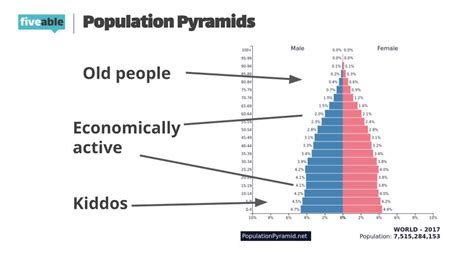The United States Census Bureau collects a vast amount of data every ten years, providing invaluable insights into the American population. This information is a gold mine for AP Human Geography students, offering a rich resource for understanding population patterns, demographic trends, and their implications for society.

Population Characteristics
The census provides detailed information on the characteristics of the American population, including:
- Age: The median age of the U.S. population in 2020 was 38.5 years, with the over-65 population growing rapidly.
- Race and Ethnicity: The census categorizes people into various racial and ethnic groups, with the largest being White (57.8%), Hispanic or Latino (18.7%), Black or African American (13.4%), and Asian (6.0%).
- Gender: The U.S. population is nearly evenly split between males and females, with a slight majority of females (50.5%).
- Education: The census tracks educational attainment, revealing that 33.4% of Americans have a bachelor’s degree or higher.
- Income: The median household income in the U.S. was $67,521 in 2019, with significant disparities based on race and gender.
Population Distribution
The census also provides data on the spatial distribution of the American population, including:
- Urbanization: The majority of Americans (80.7%) live in urban areas, with the most populous being New York City, Los Angeles, and Chicago.
- Population Density: The population of the U.S. is highly unevenly distributed, with the highest densities in the Northeast and California.
- Migration: The census tracks migration patterns, revealing that the most common destination for Americans moving between states is Florida.
Applications of Census Data in AP Human Geography
The applications of census data in AP Human Geography are endless. Students can use the information to:
- Analyze population trends: Identify and explain changes in the size, composition, and distribution of the American population.
- Understand social and economic disparities: Examine and compare demographic characteristics across different groups to identify patterns of inequality.
- Develop population projections: Forecast future population trends based on historical data and demographic models.
- Study the effects of government policies: Analyze how government policies, such as immigration or housing programs, have impacted population patterns.
- Inform land use planning: Use census data to determine population growth and characteristics in specific areas, informing decisions about housing, infrastructure, and community planning.
Tables
Table 1: Population Characteristics of the United States (2020)
| Characteristic | Value |
|---|---|
| Population | 331,449,281 |
| Median Age | 38.5 years |
| White | 57.8% |
| Hispanic or Latino | 18.7% |
| Black or African American | 13.4% |
| Asian | 6.0% |
| Female | 50.5% |
| Bachelor’s Degree or Higher | 33.4% |
| Median Household Income | $67,521 |
Table 2: Population Distribution of the United States (2020)
| Characteristic | Value |
|---|---|
| Urban Population | 80.7% |
| Population Density | 35.6 people per square mile |
| Most Populous City | New York City |
| State with Highest Net Migration | Florida |
Table 3: Applications of Census Data in AP Human Geography
| Application | Description |
|---|---|
| Population Trend Analysis | Identify and explain changes in the size, composition, and distribution of the population. |
| Social and Economic Disparities | Examine and compare demographic characteristics across different groups to identify patterns of inequality. |
| Population Projections | Forecast future population trends based on historical data and demographic models. |
| Government Policy Analysis | Analyze how government policies, such as immigration or housing programs, have impacted population patterns. |
| Land Use Planning | Use census data to determine population growth and characteristics in specific areas, informing decisions about housing, infrastructure, and community planning. |
Table 4: Creative Applications of Census Data
| Idea | Description |
|---|---|
| Geodemographics: Use census data to create profiles of different neighborhoods and consumer segments based on demographic characteristics. | |
| AI-Powered Population Forecasting: Train machine learning algorithms to predict population growth and trends based on historical census data. | |
| Personalized Healthcare Planning: Analyze census data to identify underserved populations and develop targeted healthcare interventions. | |
| Environmental Policymaking: Use census data to assess the impact of population growth on natural resources and develop policies to mitigate environmental impacts. |
